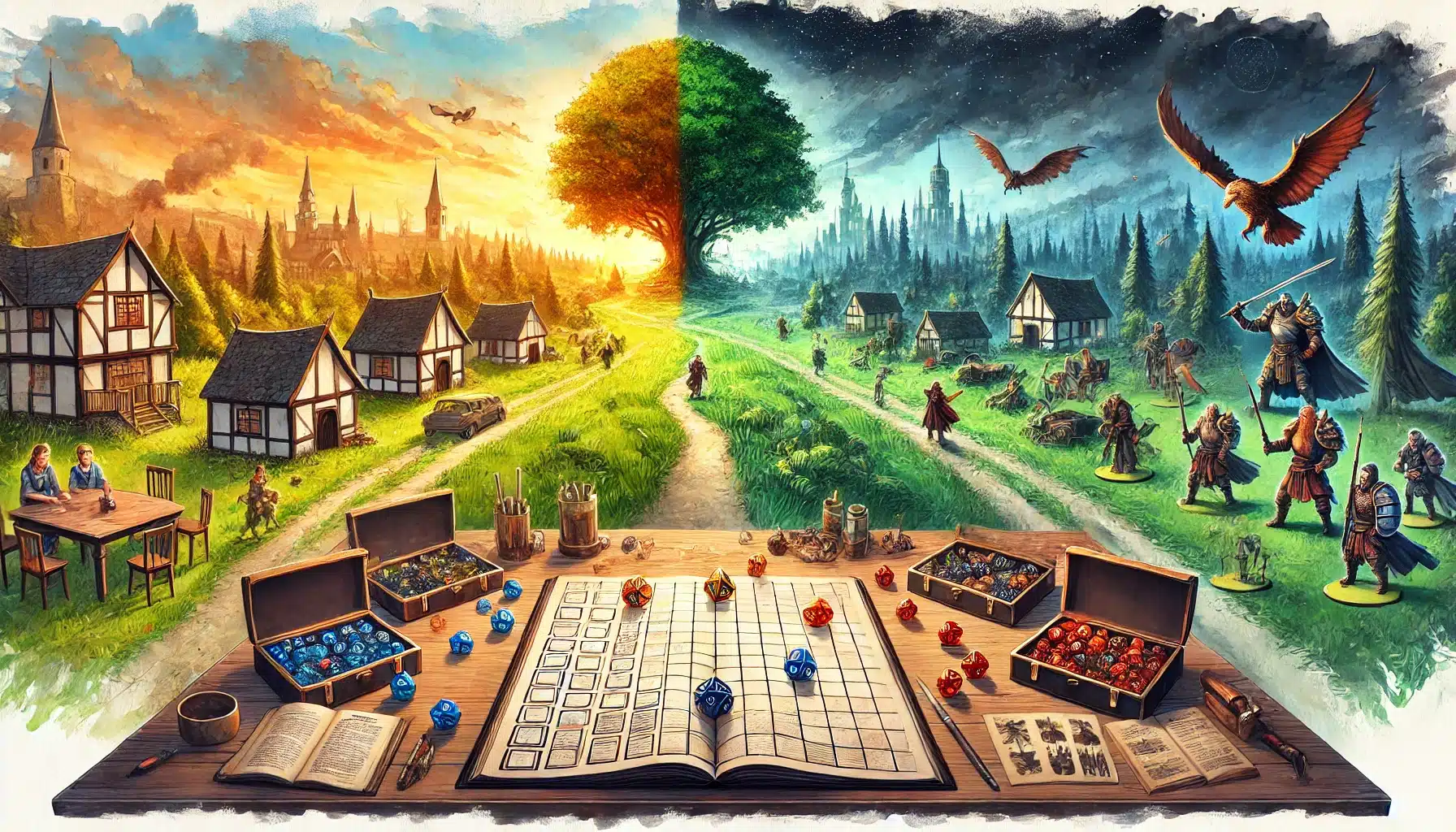As a Dungeon Master, crafting a world teeming with adventure is no small feat. One of the most thrilling aspects of any campaign is the element of surprise – those unexpected encounters that keep your players on their toes. Do not fear because random encounter tables are the secret weapon in your DM toolkit, capable of injecting spontaneity and excitement into your game. But creating these tables isn’t just about throwing together a list of monsters. The real art lies in balancing these encounters to ensure they’re challenging, fair, and above all, fun.
Let’s dive into the nitty-gritty of creating balanced random encounter tables for Dungeons & Dragons 5th Edition. We’ll explore the intricacies of Challenge Ratings, the importance of understanding your party’s capabilities, and the techniques for crafting encounters that will leave your players talking long after the dice stop rolling.
The Foundation: Understanding Challenge Ratings
At the heart of balancing encounters in D&D 5e lies the concept of Challenge Rating (CR). This numerical value serves as a rough gauge of a monster’s difficulty, with CR 1 representing a moderate challenge for four 1st-level adventurers. However, CR is just the starting point – it’s a tool, not a rule.
When building your encounter table, consider the adventuring day as a whole. The Dungeon Master’s Guide suggests that a typical party can handle about 6-8 medium encounters or 3-4 hard encounters between long rests. This guideline helps prevent your random encounters from depleting party resources too quickly, ensuring that each encounter adds to the story without derailing the entire adventure.
Knowing Your Party: The Key to Perfect Balance
Before you start rolling on those monster tables, take a moment to really understand your party. How many players are at your table? What level are their characters? What’s the mix of classes and roles? These factors dramatically influence what constitutes a “balanced” encounter.
A party of spellcasters might breeze through encounters that would challenge a group of melee fighters. Similarly, a well-equipped 5th-level party might punch well above their weight class thanks to magic items or unique abilities. Jot down notes about your party’s strengths, weaknesses, and special capabilities. This information will be your North Star as you navigate the waters of encounter design.
Try my AI Tabletop RPG generators...and an extensive library of content!
Crafting Your Table: A Blend of Art and Science
Now comes the creative part – actually building your encounter table. Start by considering your setting. A table for a haunted forest will look vastly different from one designed for a bustling city or a scorching desert. List out creatures and events that make sense for your environment, keeping in mind both combat encounters and non-combat interactions.
When it comes to populating your table, variety is the spice of life. Aim for a mix of difficulties – mostly medium encounters, sprinkled with a few easy warm-ups, some genuinely challenging hard encounters, and perhaps one or two deadly situations for those moments when you really want to test your players’ mettle.
A good rule of thumb for a 20-entry table might be:
- 2-3 easy encounters
- 10-12 medium encounters
- 4-5 hard encounters
- 1 deadly encounter
- 2-3 non-combat encounters or events
This distribution ensures that most rolls will result in a manageable fight, with the occasional spike in difficulty to keep things interesting.
Balancing Act: XP Budgets and Monster Selection
To bring mathematical rigor to your table, use the XP Thresholds by Character Level table in the Dungeon Master’s Guide. Calculate the XP totals for each difficulty level based on your party’s size and level. For instance, a party of four 5th-level characters might have thresholds like this:
- Easy: 1,000 XP total
- Medium: 2,000 XP total
- Hard: 3,000 XP total
- Deadly: 4,400 XP total
With these budgets in mind, select monsters that fit both your setting and your XP limits. Don’t be afraid to mix and match – a encounter doesn’t have to be a single monster. A medium encounter might be a pair of CR 2 creatures, or it could be a CR 3 monster leading a small group of CR 1/4 minions. This approach not only helps with balancing but also creates more dynamic and interesting fights.
⚔️ Fantasy RPG Random Tables Books
Make life as a Gamemaster easier…
If you play Dungeons & Dragons, Pathfinder, or other fantasy RPGs, this
RPG random tables series
is packed with encounters, NPCs, treasure, and more. Available in eBook or print—either way, you’ll have a wealth of adventure ideas at your fingertips.
Beyond the Numbers: Adding Flavor and Flexibility
While XP budgets and CR provide a solid framework, don’t let them constrain your creativity. The most memorable encounters often have an element that can’t be quantified by numbers alone. Perhaps the terrain plays a crucial role, with difficult footing or environmental hazards. Maybe the enemies employ clever tactics, or there’s an opportunity for the players to turn the tables through quick thinking.
Include a few wildcards in your table – encounters that might be easier or harder depending on how the players approach them. A hungry beast might be placated with food, avoiding a fight altogether. Conversely, a seemingly simple interaction could spiral into conflict if the players aren’t careful with their words.
Putting It All Together: Your Finished Table
As you assemble your final table, think about how each entry tells a mini-story. Instead of just listing “2 Ogres,” describe the scene: “Two ogres arguing over a half-eaten deer carcass, oblivious to their surroundings.” This approach not only makes your job as DM easier when the encounter comes up but also helps you quickly set the scene for your players.
Remember, your random encounter table is a living document. As you use it in play, pay attention to how encounters unfold. Are certain entries consistently too easy or too hard? Do some encounters drag on too long? Use this feedback to refine and adjust your table over time.
By carefully considering your party’s capabilities, mixing difficulties, and infusing your encounters with narrative flair, you’ll create a random encounter table that not only balances challenge with fairness but also enhances the overall story of your campaign. With this tool in your DM arsenal, you’ll be ready to keep your players engaged, challenged, and eagerly anticipating what might be around the next corner.










